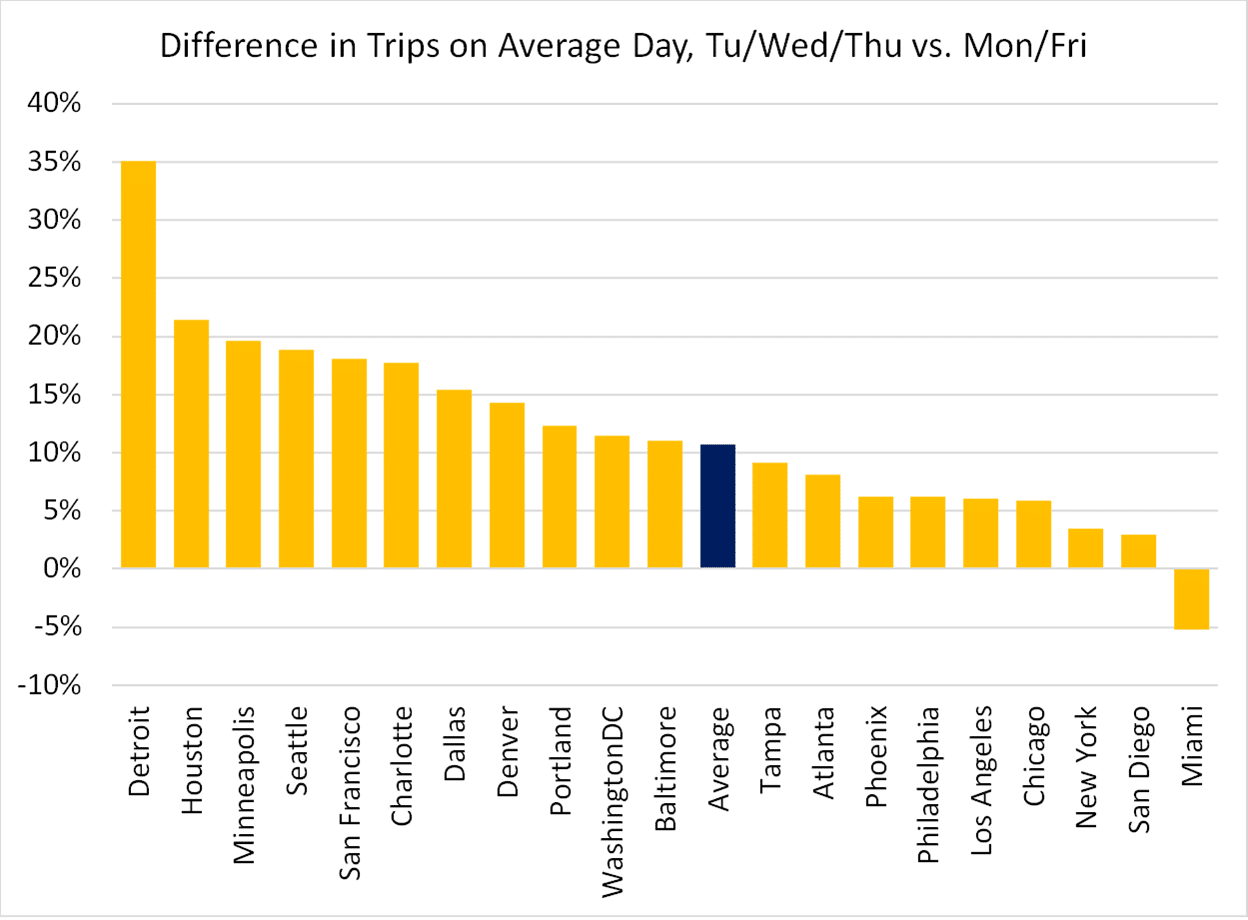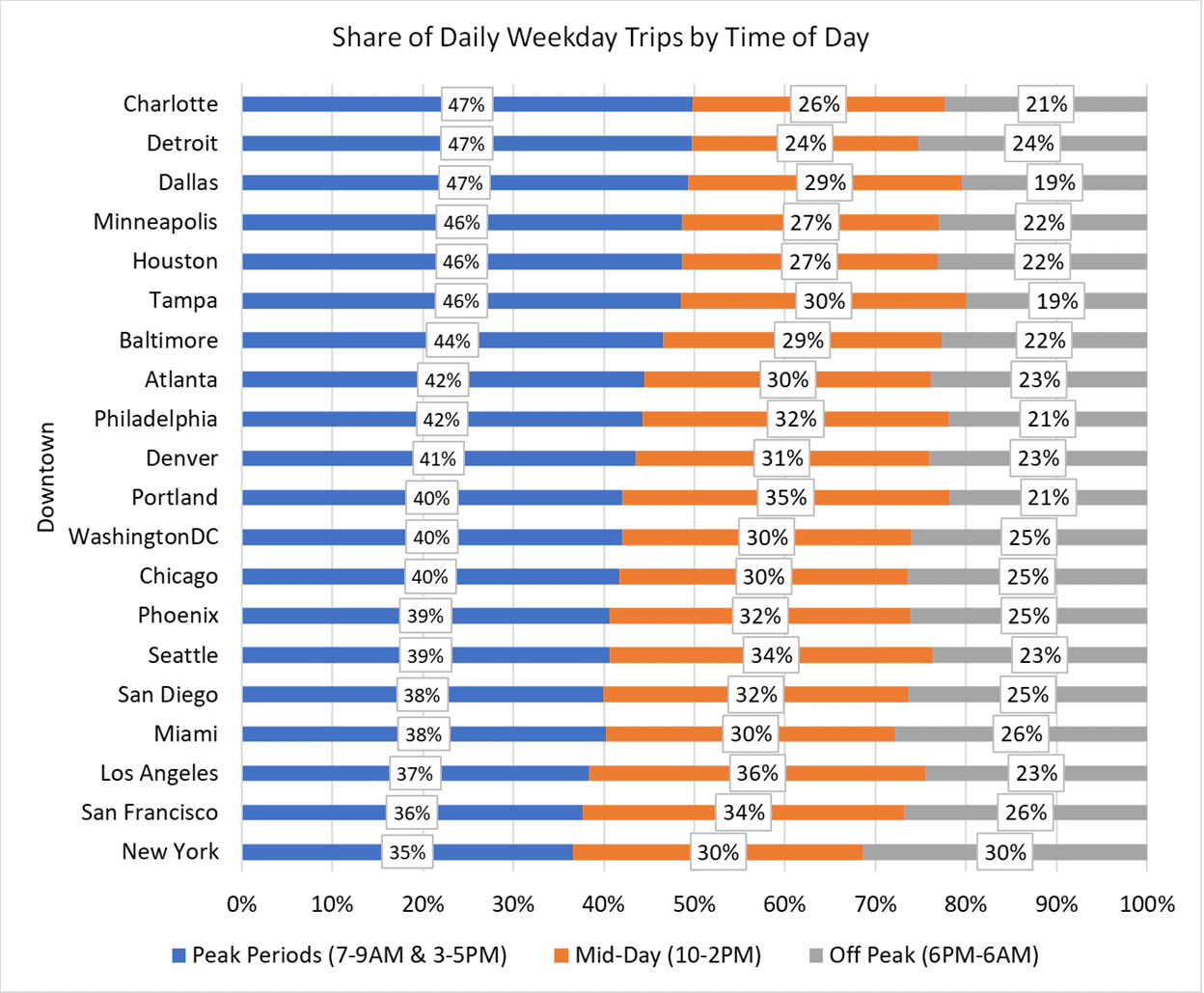
COVID-19 had a substantial impact on nearly every dynamic of road travel – from urban to rural vehicle miles traveled (VMT), the shift in suburban and downtown travel, time of day changes and the rise in telecommuting. With the shift toward remote work for many employees, downtown trips to the central core witnessed a notable decline. Last week, we examined 20 U.S. downtowns aiming to comprehend “new normal” travel trends. Apart from a couple downtowns, the vast majority sit below March 2020 levels.
Further, INRIX analyzed trip data based on the day of week and time of day, providing valuable insights about mobility around implementation of ‘back to office’ policies.
Day of Week
Many employers have implemented “hybrid” work schedules, with employees back in office a couple days per week. To analyze where hybrid work was occurring, INRIX looked at trips downtown by day, to see how mid-week travel compared to Mondays and Fridays. High variance between the two may indicate a higher concentration of hybrid work over the traditional 5-day work week.

Time of Day
COVID-19 and related government policies shifted the public’s travel habits dramatically. During the initial stages of the pandemic, traffic delays fell immediately, and the trip growth that followed didn’t reflect pre-COVID commuting patterns. Mostly, traffic grew around the middle of the day rather than during the AM and PM peak periods.
But with employees potentially returning to the office, INRIX wanted to analyze how traffic to and from downtown was distributed throughout the weekday.

Downtowns in Charlotte, Detroit, and Dallas saw the highest share of daily trips in the commuting peak periods out of all downtowns analyzed. This may suggest a more traditional commute pattern of employees going into the office for work each week.
During mid-day commuting periods, Los Angeles and Portland had the highest share of daily weekday trips, potentially indicating a notable trend towards telecommuting. New York, Miami, San Francisco also exhibit high telecommuting by having the largest share of daily weekday trips during off-peak hours compared to the other downtown areas.
INRIX will continue to monitor trends in downtown travel as ‘return to office’ programs continue. More to come.




